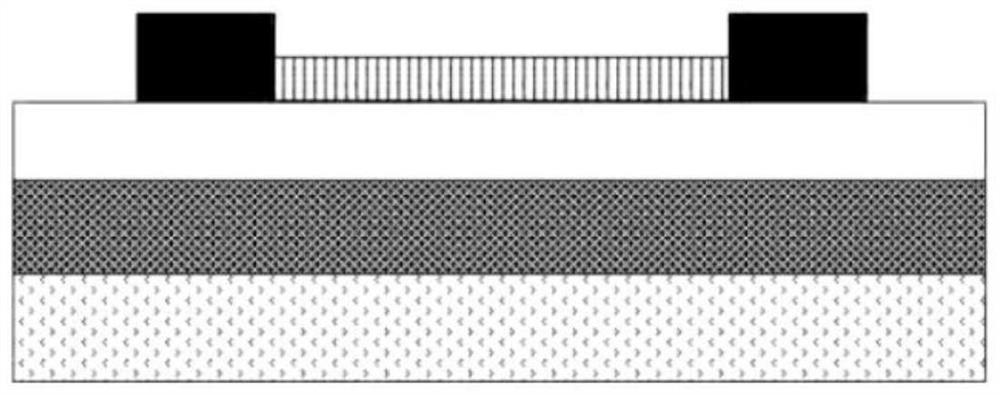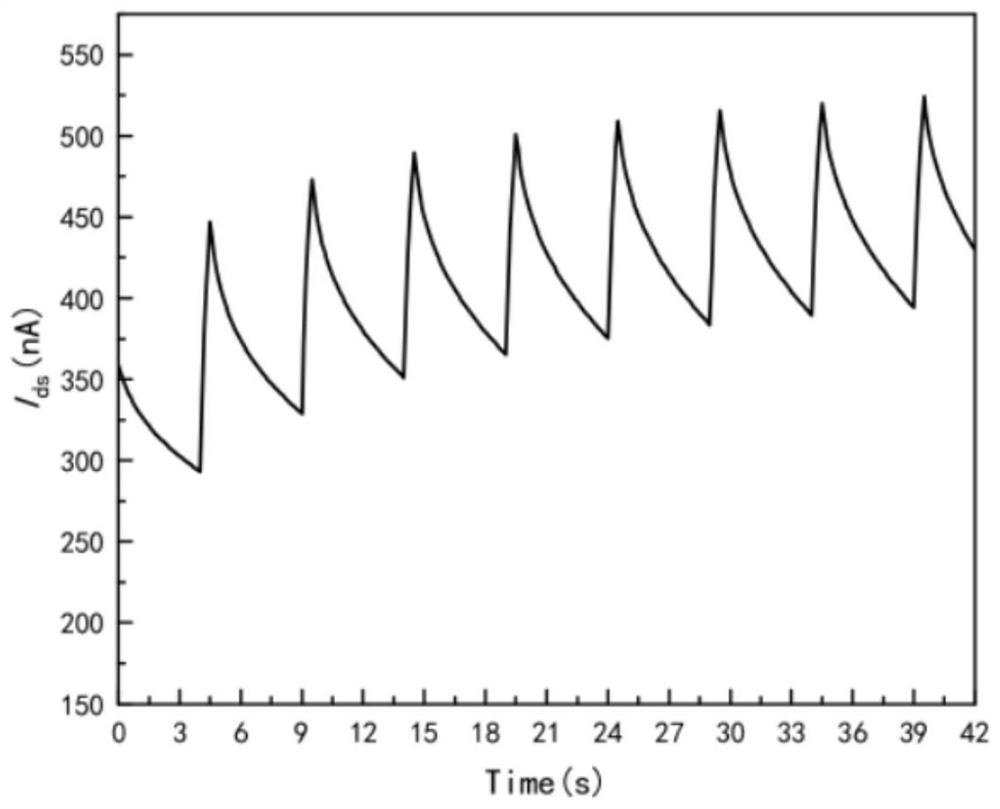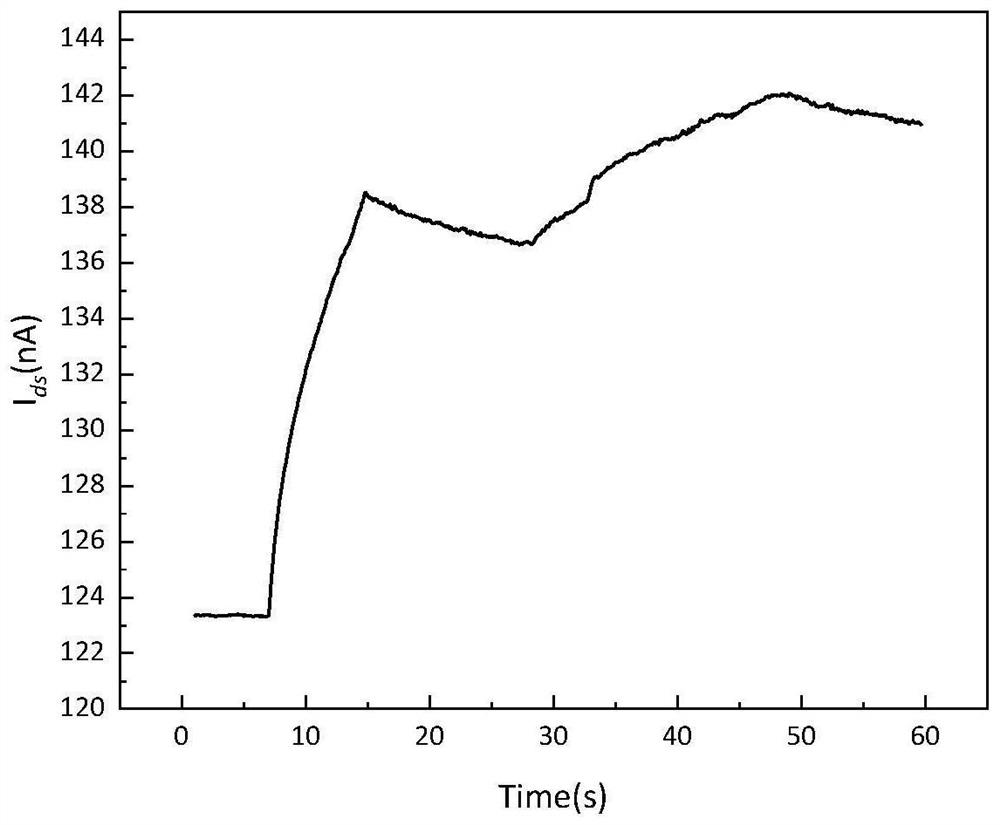Biological phototransistor based on protein molecules and preparation method thereof
A phototransistor, protein molecule technology, applied in the field of photoelectric sensing, can solve problems such as low utilization rate, achieve good biocompatibility, good sensitivity and specificity, and broaden the response band effect.
- Summary
- Abstract
- Description
- Claims
- Application Information
AI Technical Summary
Problems solved by technology
Method used
Image
Examples
Embodiment 1
[0035] figure 1 It is a structural schematic diagram of the biophototransistor based on protein molecules in Example 1 of the present invention.
[0036] Such as figure 1 As shown, the phototransistor structure in Embodiment 1 mainly includes: a substrate, a dielectric layer, a channel layer, two gold electrodes, and a photosensitive active layer arranged sequentially from bottom to top.
[0037] The substrate in Embodiment 1 is a silicon substrate, and the dielectric layer is silicon dioxide with a thickness of 300 nm.
[0038] The channel layer is nano-scale sheet-shaped zinc oxide grown by CVD, and its size is a two-dimensional sheet-like structure with a length of 8 μm and a width of 7 μm. In some other embodiments, the size of the flaky zinc oxide can be appropriately selected according to the actual situation, and the range is generally a square or rectangular two-dimensional sheet structure with a length of 2-8 μm and a width of about 2-8 μm.
[0039] The pre-designe...
Embodiment 2
[0060] The difference between this example and Example 1 is that in the preparation of the protein-based biophotoelectric transistor, the light-sensitive protein molecules were drip-coated on the surface of the semiconductor transistor, and then air-dried for 2 hours before testing.
Embodiment 3
[0062] The difference between this example and Example 1 is that in the preparation of the protein-based biophotoelectric transistor, the channel layer of the semiconductor transistor, that is, the sheet-shaped zinc oxide has a size of 2 μm in length and 7 μm in width.
[0063] In summary, the biological phototransistor device made according to the preparation method of the present invention can further explore and study the light response characteristics of the light-sensitive protein molecule bacteriorhodopsin, which belongs to the application field research of biological photosensitive materials; in addition , In the past, the research on photocells based on protein molecules needed to provide an electrolyte conductive loop environment for the device, and the electrolyte solution would bring a greater influence on the dark current of the device loop. The biophototransistor based on protein molecules can provide a conductive channel for the device through the semiconductor ma...
PUM
| Property | Measurement | Unit |
|---|---|---|
| Thickness | aaaaa | aaaaa |
| Size | aaaaa | aaaaa |
Abstract
Description
Claims
Application Information
 Login to View More
Login to View More - R&D
- Intellectual Property
- Life Sciences
- Materials
- Tech Scout
- Unparalleled Data Quality
- Higher Quality Content
- 60% Fewer Hallucinations
Browse by: Latest US Patents, China's latest patents, Technical Efficacy Thesaurus, Application Domain, Technology Topic, Popular Technical Reports.
© 2025 PatSnap. All rights reserved.Legal|Privacy policy|Modern Slavery Act Transparency Statement|Sitemap|About US| Contact US: help@patsnap.com



